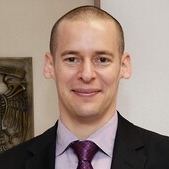What Is Self-Organization?
A special issue of Entropy (ISSN 1099-4300). This special issue belongs to the section "Complexity".
Deadline for manuscript submissions: closed (15 October 2021) | Viewed by 8003
Special Issue Editors
Interests: computational neuroscience; self-organized robots; information theory; complex and cognitive systems
Special Issues, Collections and Topics in MDPI journals
Interests: nonequilibrium statistical physics; collective dynamics and self-organization in complex systems; mathematical modeling of biological and socioeconomical systems
Interests: self-organizing systems; complexity; information; artificial life; philosophy
Special Issues, Collections and Topics in MDPI journals
Special Issue Information
Many of us have used the notion of “self-organization” in our studies. What is it precisely, though? A constituent element could be, e.g., the emergence of non-trivial properties from comparatively simple rules. What would simple, non-trivial or complex emergence mean in this context?
In this Special Issue, we invite viewpoints, perspectives, and applied considerations on questions regarding the notions of self-organization and complexity. Examples include:
Routes: In how many different ways can self-organization manifest itself? Would it be meaningful, or even possible, to attempt a classification?
Detection: Can we detect it automatically—either the process or the outcome? Or do we need a human observer to classify a system as “self-organizing”? This issue may be related to the construction of quantifiers, e.g., in terms of functions on phase space, such as entropy measures.
Complexity: Is a system self-organizing only when the resulting dynamical state is “complex”? What does “complex” mean exact;ly? Are there many types of complexity, or just a single one? E.g., it has never been settled whether complexity should be intensive or extensive, if any.
Domains: Where do we find self-organizing processes? Are the properties of self-organizing systems domain-specific or universal? In which class of systems does self-organization show up most clearly?
Prof. Dr. Claudius Gros
Dr. Damián H. Zanette
Dr. Carlos Gershenson
Guest Editors
Manuscript Submission Information
Manuscripts should be submitted online at www.mdpi.com by registering and logging in to this website. Once you are registered, click here to go to the submission form. Manuscripts can be submitted until the deadline. All submissions that pass pre-check are peer-reviewed. Accepted papers will be published continuously in the journal (as soon as accepted) and will be listed together on the special issue website. Research articles, review articles as well as short communications are invited. For planned papers, a title and short abstract (about 100 words) can be sent to the Editorial Office for announcement on this website.
Submitted manuscripts should not have been published previously, nor be under consideration for publication elsewhere (except conference proceedings papers). All manuscripts are thoroughly refereed through a single-blind peer-review process. A guide for authors and other relevant information for submission of manuscripts is available on the Instructions for Authors page. Entropy is an international peer-reviewed open access monthly journal published by MDPI.
Please visit the Instructions for Authors page before submitting a manuscript. The Article Processing Charge (APC) for publication in this open access journal is 2600 CHF (Swiss Francs). Submitted papers should be well formatted and use good English. Authors may use MDPI's English editing service prior to publication or during author revisions.








